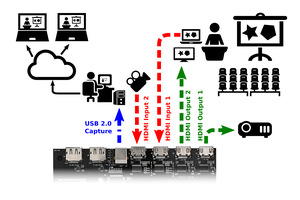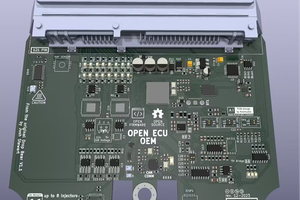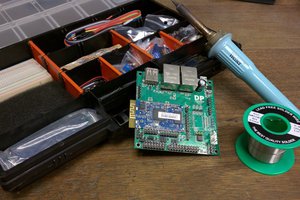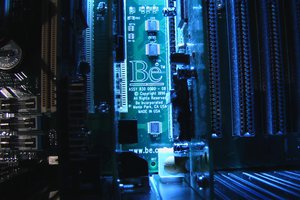After comparing and testing a wide variety of solutions for home automation (hardware and software), I found that the available options fall into one or more of the following categories:
- Too expensive
- Proprietary / not hacker-friendly
- Insecure or invasive of privacy
- Require a third-party intermediary
- Difficult to set up and maintain
There is clearly an opportunity for something better. Many startups have recognized this opportunity and are building their own products in an attempt to solve the problem. However, the motivations behind most of these profit-seeking businesses are misaligned with the the needs of home automation users. Many of these companies are developing proprietary hardware in hopes of generating a profit from hardware sales. Others are built around subscription pricing models that are appealing to investors, but not to budget-conscious users.
HAKit takes a slightly different approach: use low-cost, commodity, off-the-shelf hardware components, and combine them with open-source software in a kit that delivers a complete self-hosted solution. HAKit makes it easy to use these components in a system that is tested and known to work.
Besides providing the components necessary for a fully-functional system, HAKit adds an additional level of convenience by allowing less-technical users to configure their home automation systems without touching any configuration files by hand. This extra service is bundled with HAKit (and is built into the one-time price or as a standalone license) but is entirely optional. It also works without the user handing over any outside access to the system, meaning the user's home automation system is private and secure at all times.
The web-based configuration tools provided by HAKit will remain proprietary (or possibly under a dual-license), enabling HAKit to grow and market itself as a competitive company and product. All of the other software components that HAKit contributes to the system will be made open source.
This structure will empower HAKit to make the most far-reaching positive impact in the area of home automation while also maintaining a high level of openness and flexibility for hackers and DIY'ers.
While most hackers can, with some work, put together the same hardware components and configure the same freely-available software on their own, HAKit aims to significantly lower the (mostly software-related) difficulty involved in building a system like this. The specific notable contributions made by HAKit include:
- A fully-functional, self-updating SD card image with all necessary software components preinstalled (open-source, free)
- A collection of scripts to aid in initial WiFi/network setup (open-source, free)
- A web-based configuration tool for configuring and organizing home automation devices and rules
- The kit itself, including all necessary hardware components and setup guide

 Tim Ansell
Tim Ansell
 Miguel Tomas
Miguel Tomas
 Daan Pape
Daan Pape
 BetaMax
BetaMax